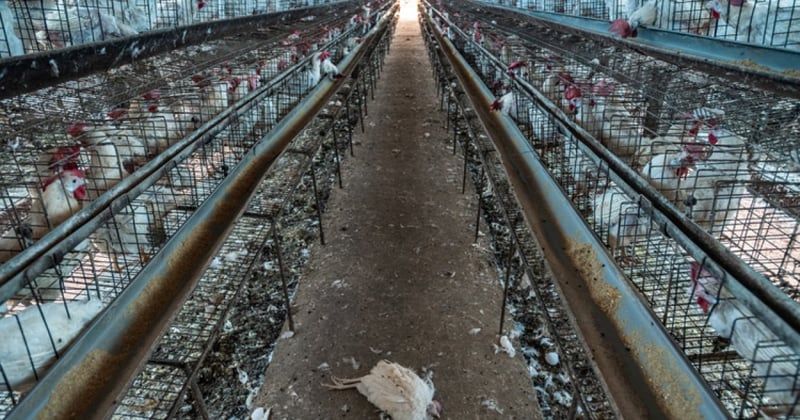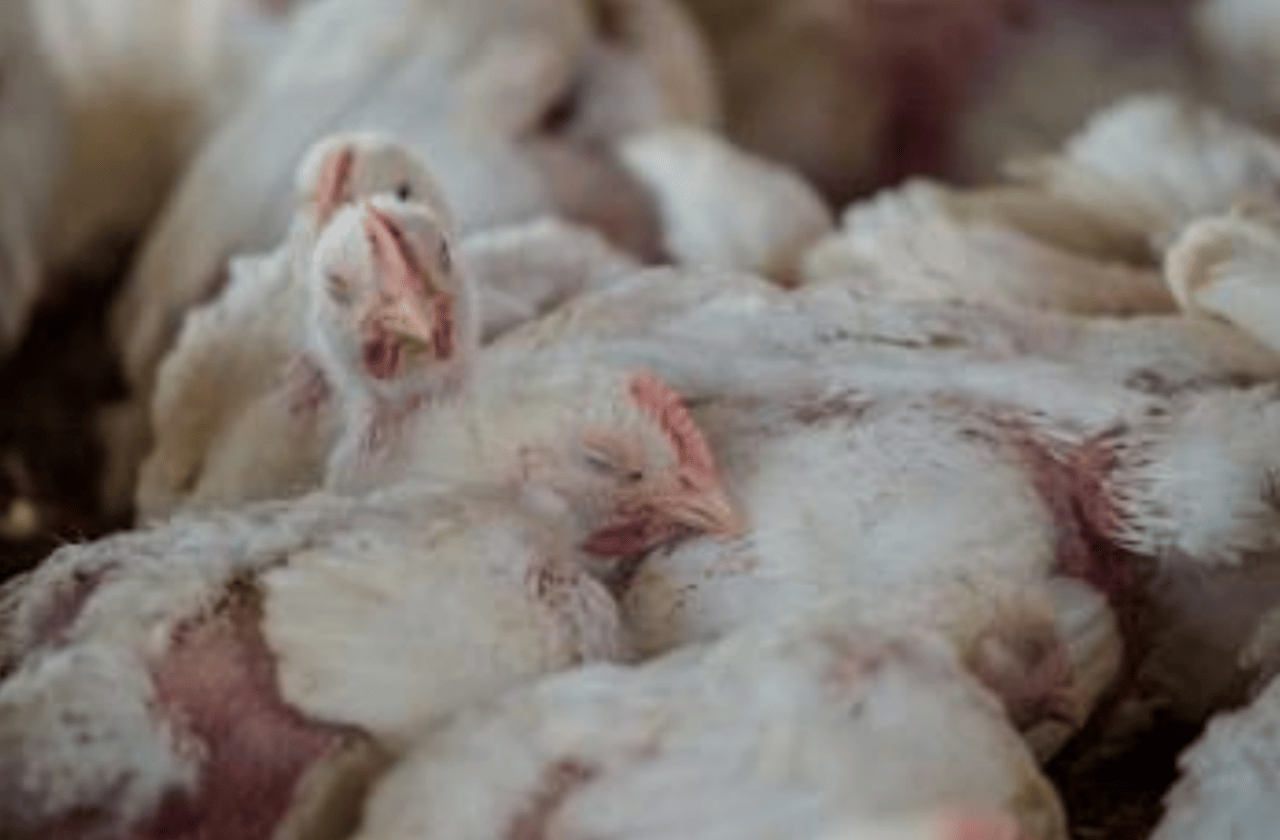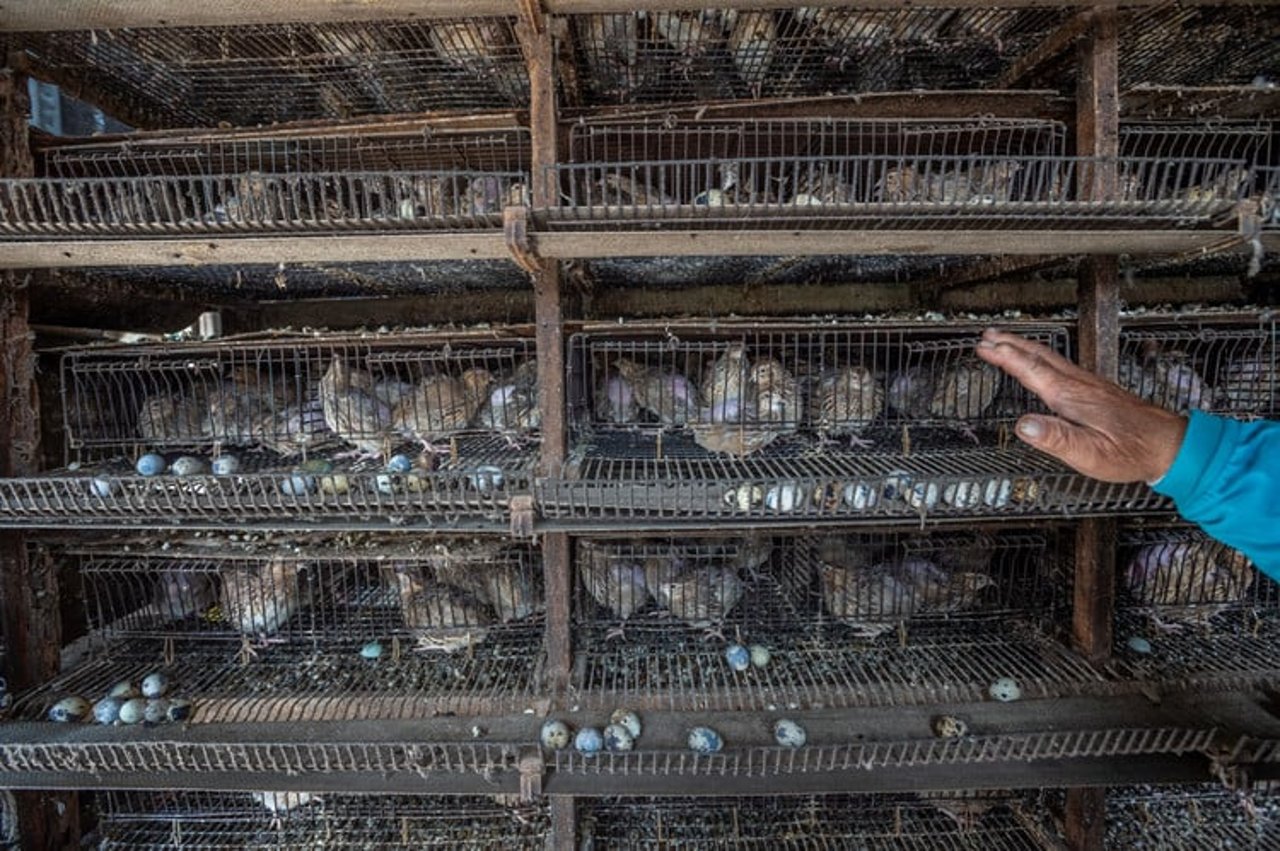
A chicken is a chicken is a chicken, right? Well, when it comes to these animals in farming, chickens will have a drastically different role and life whether they are raised for meat (broiler) or for eggs (layer).
World Animal Protection is always identifying ways for you to take action and make “Change for Chickens” by advocating for corporate commitments or government policies that improve the lives of chickens. This usually focuses on the roughly nine billion chickens raised for meat in the US each year. But you have also lent your voice to supporting our efforts to pass laws protecting millions of laying hens who produce our eggs.
In this work, you may see us use terms like “broiler” or “layer,” so we thought it might be helpful to identify what these terms mean, why the distinctions are made, and the significant differences in the lives and welfare of chickens depending on how they are raised.
Broilers
Chickens raised for meat are called “broilers.” Slaughtered as young as six weeks old in the US., modern broiler chickens are bred for rapid growth and given high-energy corn and soy-based diets to force even greater weight gain in a short period. This extreme, rapid growth causes weak bones, painful joints, organ failure, and an inability to move normally. Although these chickens are not caged, they are tightly packed into barns to maximize capacity, meaning that as they grow, they quickly have no room to move. No space means unsanitary conditions, dangerous ammonia levels, and more disease. High ammonia levels, from the large amount of waste accumulated in the litter, can cause painful burns on their legs and feet and damage their eyes and respiratory systems.
Factory broiler farms typically do not provide natural lighting and chickens are constantly kept in dim conditions for up to 20 hours a day, with just enough light to keep them eating constantly, but not enough to allow them to be active. At night, the artificial lights are often turned off for only a couple of hours at a time. This means chickens are unable to develop normal sleep cycles. They have no opportunity to walk around or take part in their natural behaviors, such as jumping on perches or foraging for food. It’s a sad, cruel life.
Layers
Chickens raised to produce eggs are called “layers.” In the US today, roughly 3 out of 4 egg-laying hens are raised in conventional farms, spending the bulk of their lives in battery cages with as many as ten other birds. Cages are stacked on top of one another to maximize space in the barn, making them difficult to inspect. Dead birds may remain in cages for days or weeks, exposing surviving hens to pathogens and disease. The cages allow for waste to fall through and collect for disposal, but it accumulates on the bottom bars and in the trays or belts below the cages, putting the birds at risk from contaminants in the waste and causing high ammonia concentrations in the barn. High ammonia concentrations irritate the hens’ eyes and airways and can predispose them to respiratory disease.
Modern layers have been bred to produce large numbers of eggs, depleting their calcium levels and leading to brittle bones and fractures. The restricted movement from cage confinement also weakens muscles and bones, further predisposing the hens to fractures. The stressful environment and inability to express natural behaviors causes birds to peck one another’s feathers. To prevent this, producers often cut part of their sensitive beaks off when they are chicks—without anesthetic. Beak trimming with a hot blade or with infrared light is permitted in the US and both procedures are painful for the birds. Even after healing, the pain from beak trimming can persist due to permanent damage to nerves and other tissues.
Some hens are kept for breeding—laying eggs, not for human consumption, but to be hatched and their chicks raised as either broilers or layers. Breeding hens living in hatcheries face many of the same welfare issues as layers, as they are kept in cages to produce eggs constantly. However, in breeds used for meat, food intake is often severely restricted, to stunt the fast growth that they have been genetically selected for, so their ability to lay is not compromised. The result is chronic hunger.
Each hatchery will breed and hatch chicks specifically for either the broiler or the egg industry, rarely both. Chicks hatched to be broilers are vaccinated on their first day of life and sent immediately to the farm where they will spend their short seven weeks of life.
Chicks hatched to be layers face different fates depending on their sex. Female chicks, called “pullets,” will be vaccinated and then sent to a dedicated pullet production facility within the first day or two. They’ll be raised in barn conditions similar to broilers until about 20 weeks old, just before they are mature enough to start laying eggs when they are moved to a layer facility to replace older laying hens.
Male chicks, though, are not able to become layers and do not have the right body type to be raised for meat, so they are viewed as having no value by egg producers. These chicks are killed in en masse, often using horrific methods like grinding or asphyxiation. In 2016, United Egg Producers committed to adopt in-ovo sexing technologies by 2020 to identify and dispose of male chicks pre-hatch, but progress has been slow.
How You Can Help Chickens
Whether raised as broilers or layers, chickens deserve lives worth living and environments that allow them to express their natural behavior. No chickens should be confined in cages or in cramped, dark barns. Instead, they should be free to move about with plenty of space to spread their wings. Barns should have clean litter for the chickens to scratch and dust-bathe, adequate lighting, and enrichments such as perches or nest boxes for laying hens.
Join us in urging KFC—one of the largest purchasers of chicken in the US—to adopt the Better Chicken Commitment. Stay connected for updates on future cage-free laws that may be introduced in your state.
All photos courtesy of WeAnimals

